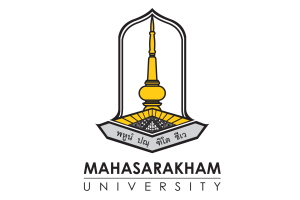MSU Solar Energy : Renewable Energy and Climate Change

Renewable Energy at the University
The background of renewable energy implementation at the university stems from its extensive infrastructure, consisting of over 40 buildings primarily using electricity throughout the year. In 2016, the Mahasarakham University campus in Khamriang incurred electricity costs exceeding 86.4 million baht, while the urban campus had expenses of approximately 21.6 million baht. Combined, the total annual electricity expenditure for both areas reached 108 million baht, which is considered a significant cost.
A study of the university's buildings revealed that many have rooftop areas suitable for installing solar power systems. To reduce electricity costs, the Facilities Management Office initiated a project to install solar energy systems, seeking budget support from the Ministry of Energy amounting to 50 million baht. The total capacity for both areas is divided into Khamriang with a production capacity of 501.9 kW and the urban area with a capacity of approximately 415.40 kW.
The anticipated outcome of this initiative, if the solar energy systems are properly connected and operate at full efficiency, is a reduction in electricity costs by about 5-10%, translating to approximately 1 million baht in savings.

Learning Center
The Learning Center serves as an educational hub for students and various agencies, both public and private, to study and gain an understanding of solar power technology and the installation of rooftop solar energy systems. It is designed to include a monitoring and recording system that connects signals to the inverter, electrical control panel, transformer, motor for measuring power quality, and weather monitoring equipment.
All collected data will be recorded and displayed in real time, allowing system administrators and visitors to learn and conduct research while monitoring the equipment's performance. This setup enables them to evaluate operational efficiency and assess the performance of the solar energy production system at any time, as well as assist in planning maintenance for the equipment.

Energy-efficient appliances are replacing conventional ones. Mahasarakham University has a policy to design its academic buildings as green buildings to enhance energy efficiency within the buildings and control energy usage automatically. This includes regulated energy management rules and procedures within the academic buildings. Mahasarakham University recognizes the benefits of this approach, as it enables the organization to use energy more effectively, concretely, and sustainably. Consequently, there are guidelines to increase efficiency by replacing materials and equipment with higher-efficiency alternatives or installing new equipment to improve the overall system performance. The university prioritizes materials and equipment labeled with Energy Efficiency Label No. 5, and any units with a star rating must meet a high SEER (Seasonal Energy Efficiency Ratio), a measure of air conditioning energy efficiency calculated seasonally.
Additionally, installation follows industrial standards (https://www.tisi.go.th/website/standardlist/comp_thai/th) for materials, equipment, and the entire electrical system. Where specific requirements are not defined, applicable standards should be followed, including the IEC 61439-1&2 for electrical project components, integrated switchboards, and motor control centers (if applicable). For medium-voltage switchgear panels, manufacturers must have experience in assembly, testing, and maintenance and produce equipment meeting Thailand Industrial Standards TIS 1436-2564. Products must comply with testing standards such as IEC 61439-1&2, IEC 62271-200, IEC 62271-202, IEC 61439-6, or UL 857, or other international standards set by the Thai Industrial Standards Institute.
Manufacturers must adhere to specified requirements and not conflict with local electrical regulations. The production and installation standards serve as essential design references, both prescribed and referenced, aligning with installation conditions, geographical considerations, and engineering principles, while also complying with Thailand’s electrical installation standards. Installation must follow accurate, up-to-date regulations, primarily IEC standards, unless amendments are specified. In case of discrepancies between drawings and standards, or among referenced standards, all equipment must be designed, assembled, tested, and installed according to proper standards and methods.



